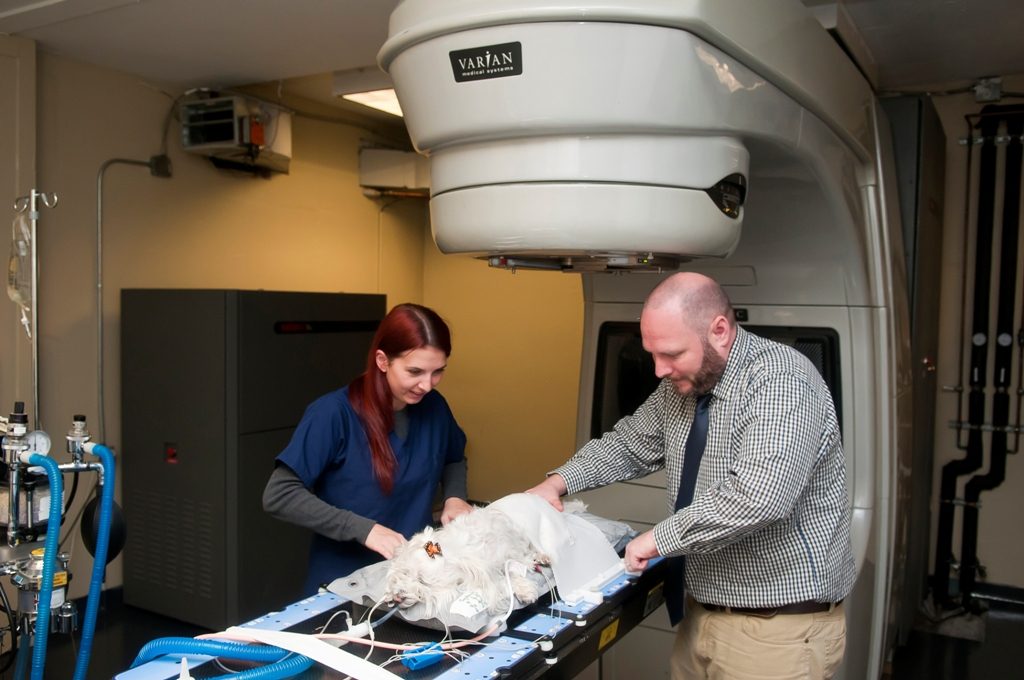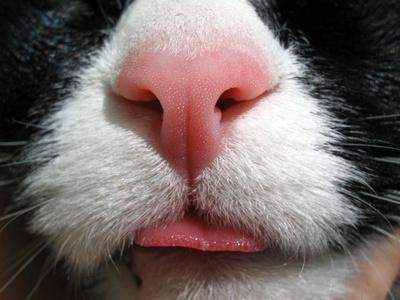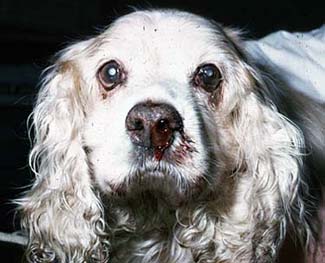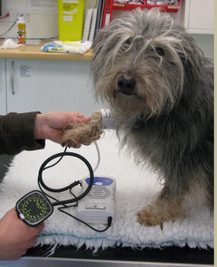Nosebleeds (called epistaxis) are a relatively common reason for pet parents to present their dogs and cats to a veterinary emergency room. Sometimes the bleeding is quite minimal, manifesting only when patients sneeze. At other times, hemorrhage can be profound and scary. This week I share some information about epistaxis in dogs and cats that I hope you will find helpful. Happy reading!
Nosebleeds – What causes them?
Pet parents should recognize epistaxis is not a specific disease. Nose bleeding is simply a clinical sign associated with a specific disease. Primary diseases that may cause nosebleeds include:
- Trauma
- Bleeding disorders (i.e.: low platelets)
- Nasal foreign object
- Oronasal fistula (an inappropriate connection between the mouth and the nasal cavity)
- Idiopathic / chronic rhinitis
- Tick-transmitted disease
- Cancer
- Nasal parasites
- Fungal infections
- High blood pressure (called hypertension)
- Tooth root abscess
- Leak blood vessels
These primary disorders may subsequently be categorized as either local or systemic diseases. The most common local disorders in dogs and cats are nasal cancer, trauma, and idiopathic / chronic rhinitis. Conversely, commonly reported systemic causes are bleeding disorders, high blood pressure (called hypertension), and leaky blood vessels. Local disorders seem to be more common than systemic ones. One-sided/unilateral epistaxis is more common in patients with local causes. Interestingly, more than 50% of dogs with a systemic cause of their nosebleeds also had one-sided nosebleeds.
Nosebleeds – What do they look like?
It may seem quite obvious what a dog or cat with epistaxis looks like. Blood is visualized at one nostril or both. Bleeding may be minimal or marked. Depending on the underlying cause, dogs or cats may have a variety of clinical signs. Affected pets may have a history of reduced appetite, lethargy, and weight loss. They often sneeze, and the nose may lose color (called depigmentation). Pet parents may note their pets sound congestion and may even swallow excessively (presumably due to post-nasal drip). Patients may have facial asymmetry, as well as noisy and/or difficulty breathing.
Other clinical signs associated with epistaxis are:
- Enlarged lymph nodes under the jaw (submandibular)
- Melena (black/tarry feces)
- Pain around the noses & eyes
- Bruising
- Coughing up blood-tinged sputum
- Urinating blood-tinged urine
- Pale gums
- Eye changes (bleeding inside the eye, tortuous retinal blood vessels, etc.)
Nosebleeds – How is the underlying cause diagnosed?
We’ve just discussed how recognizing epistaxis is relatively straightforward. But remember nose bleeding isn’t a specific diagnosis. Rather it’s a clinical sign of an underlying disease process. So we have to figure out what the primary underlying disease process is! To do so, family veterinarians will perform some testing, including:
- Complete blood count: a non-invasive blood test that gives information about red blood cells, white blood cells, and platelets (clot forming cells).
- Serum biochemical profile: a non-invasive blood test that yields information about liver and kidney function, as well as electrolytes (i.e. sodium, potassium) and certain digestive enzymes
- Urinalysis: a non-invasive evaluation of urine to screen for evidence underlying metabolic diseases
- Coagulation: evaluating a pet’s ability to form a proper blood clot is a priority. These times may be prolonged in patients with meaningful bleeding disorders
- Blood pressure
A variety of infectious diseases can cause nose bleeding in both dogs and cats. Family veterinarians should screen for specific diseases depending on your geographic location. Veterinarians should aspirate any enlarged peripheral lymph nodes, and a board-certified veterinary clinical pathologist should evaluate those samples. Ultimately, most dogs and cats require advanced imaging and nasal biopsies performed by a board-certified veterinary internal medicine specialist to obtain a definitive diagnosis. For this reason, I recommend early partnering with a specialist to develop a logical and cost-effective diagnostic plan.
Nosebleeds – How are they treated?
Treatment for nose bleeds can be divided into two phases:
- Control of nasal bleeding
- Treatment of the underlying disease process
To help control a nose bleed, one can gently place a cold compress over the bridge of the nose for 10-15 minutes. The combination of pressure and cool temperatures is often quite effective in reducing or resolving epistaxis. If nasal bleeding doesn’t stop, then a family should seek immediate veterinary medical attention for their fur baby. A veterinarian may subsequently pack the nose with gauze and/or instill drops into the affected nostril(s) to constrict local blood vessels. Sedation for a calming effect may also be helpful. Some patients require a blood transfusion if bleeding has been chronic and/or severe enough to warrant such an intervention. Rarely a veterinarian will need to perform surgery to ligate / tie off the major artery in the neck (called the carotid artery) to control major nasal hemorrhage.

One must treat the underlying disease process that caused the epistaxis in the first place. Pets with bleeding disorders need a variety of interventions, including transfusions of blood products (i.e.: red blood cells, fresh frozen plasma, platelet concentrate) and supplementation with vitamin K1. Patients with fungal infections require special treatments with antifungal medications, while those with nasal tumors often benefit from radiation and/or chemotherapy. Dogs and cats living with chronic rhinitis typically require lifelong treatments with oral and/or topical medications to control clinical signs. Partnering with either a board-certified veterinary internal medicine specialist or cancer specialist can be invaluable for determining the most appropriate treatment plan.
The take-away message about nosebleeds in dogs and cats…
Dogs and cats get nosebleeds just like you and me. Medically termed epistaxis, nasal bleeding is not a specific disease. Rather it’s a clinical sign associated with several potential primary diseases. A thorough diagnostic investigation and subsequent definitive therapy are always best to maximize the likelihood of a positive outcome.
To find a board-certified veterinary internal medicine specialist, please visit the American College of Veterinary Internal Medicine.
To find a board-certified veterinary internal medicine specialist, please visit the American College of Veterinary Internal Medicine.
Wishing you wet-nosed kisses,
cgb







